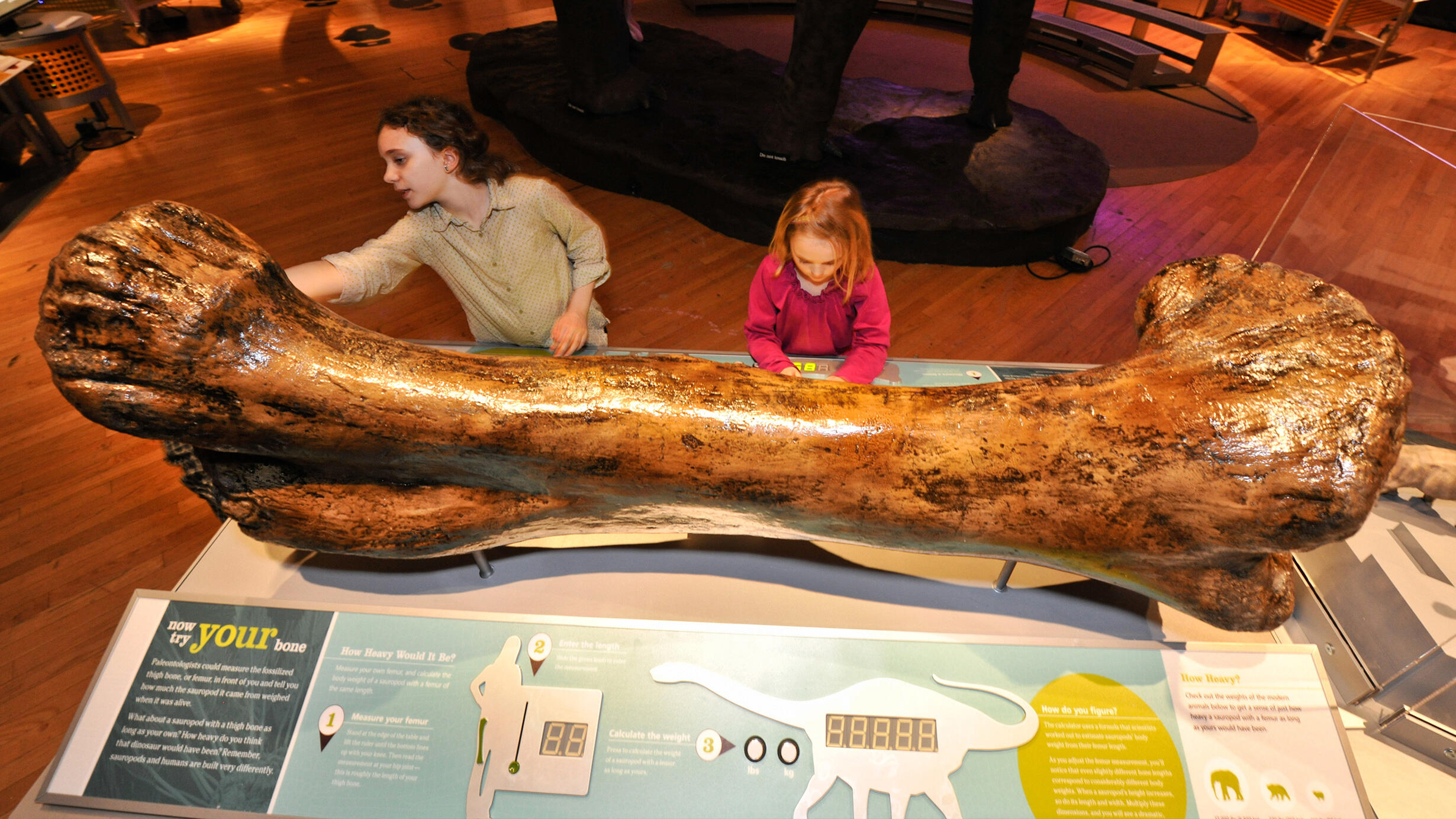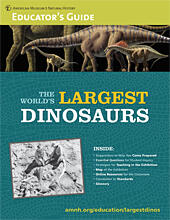The World's Largest Dinosaurs

Size affects just about everything an animal does: eating, breathing, moving, and reproducing. This traveling exhibition goes beyond bones and into the bodies of sauropods, the biggest land animals ever, to take a look at how these titans pulled it off.
Find out how scientists study fossils and living animals to understand sauropod biology; how heart rate, respiration, metabolism, and reproduction are linked to size; and what we can learn from these extinct animals about what it means to be big.
Highlights
The centerpiece of the exhibition – an enormous 60-foot-long Mamenchisaurus – features a multimedia projection showing the sauropod's internal body systems at work.
Surrounding stations feature interactive displays, touchable specimens, and scale models to reveal the anatomy and physiology of these giants.
D. Finnin/© AMNH
D. Finnin/© AMNH
D. Finnin/© AMNH
D. Finnin/© AMNH
D. Finnin/© AMNH
D. Finnin/© AMNH
D. Finnin/© AMNH
Key Questions
- What is a sauropod?
- How do sauropods vary?
- How massive were sauropods?
- What did sauropods look like?
- How did sauropods behave?
- How did sauropod bodies work?
- How do scientists study sauropods?
Reviews
“Visit. You will learn and be wonderstruck.”
– New York Daily News
“Really Refreshing.”
– Scientific American
Request More Information
Contact us to request availability for hosting this traveling exhibition.

Educator's Guide
Browse More
The World's Largest Dinosaurs is organized by the American Museum of Natural History, New York, in collaboration with with Coolture Marketing, Bogotá, Colombia.